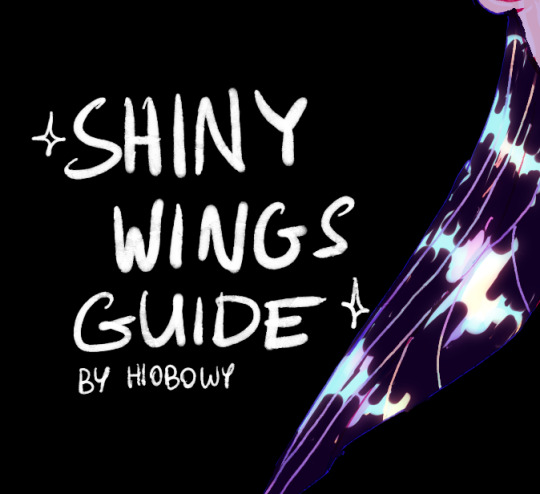Pictures aren't mine unless otherwise stated! Art blog of damn-i-ship-it
Don't wanna be here? Send us removal request.
Note
teach me?? how to draw?? the action of kissing????

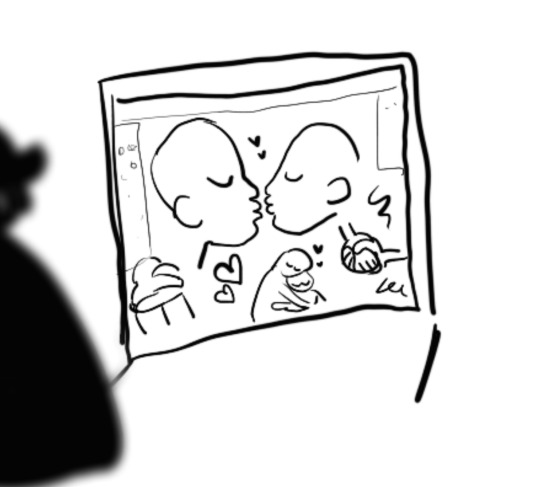
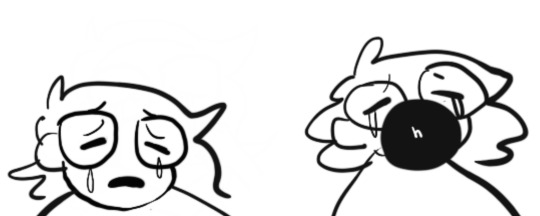
Step 1. yearn
225K notes
·
View notes
Text
Stuff I Learned at My Writing Workshop (That I’m Kicking Myself in the Head for Not Realizing Sooner):
- The difference between a book that grabs you from the beginning vs. one that you’re on the fence about tossing out the window is winning your trust. It’s why it’s “easier” to read books by authors you already know, or fanfic where you’re familiar with the characters. Winning the reader’s trust as quickly as possible should be your first goal as a writer when you’re going back and editing your first draft. This can be accomplished by things like: speaking authoritatively about the subject (even if it’s utter bullshit), graceful prose, or establishing quickly in the story what it’s about. For example,“Character A had a problem. Character B didn’t love them back, so Character A was going to kidnap them so they would.” Maybe it’s not a story you want to read, but you are now firmly couched in what you signed up for in this story and the promise the author is going to deliver on before the end.
- Characters need goals. They need goals in every moment and in every scene. Every character needs a goal in every moment and in every scene. Maybe they’re not directly pursuing that goal right this very moment but it’s probably always at the back of their mind. Romances and detective stories are the easiest to deliver on this need. Character A wants to win their love. Detective A wants to solve the case. Even when they’re having tea with grandma, their thing is at the back of their mind. Keeping your character and your story focused on this thing they want helps pull your reader along and keeps them engaged on the “So what?” and “Why are we reading this scene?” questions of why they should keep reading.
- Characters shouldn’t just have things they like, they should have obsessions. This is the one I’m kicking myself for. The scientists in Pacific Rim are eccentrically obsessed with studying their thing. Thorin in the Hobbit is obsessed with regaining his home. Katniss Everdeen is obsessed with protecting her sister. Every crazy whackadoodle fandom darling character is obsessed with something. What do they have in common? They’re intensely obsessed with the thing that they care about. We love characters who are obsessed with things beyond reason, whether it’s reclaiming their home stolen by a dragon, or building artisanal bird houses, saving your sister, or studying monsters. Everyone “likes” things, but people and characters who are obsessed with something fascinate us. Examine the characters you’re most attracted to writing in fanfic, and examine your original characters if you’re trying to build those, and figure out what are they obsessed with and how does that inform their character. That’s the thing that’s going to make readers care about them.
(Was this advice helpful? Consider donating to my Ko-fi!)
31K notes
·
View notes
Text
all the tips I found for drawing a fantasy map are like :) “here’s a strategy to draw the land masses! here’s how to plot islands!” :) and that’s wonderful and I love them all but ??? how? do y'all decide where to put cities/mountains/forests/towns I have my map and my land but I’m throwing darts to decide where the Main Citadel where the Action Takes Place is
97K notes
·
View notes
Text
It’s Not Working: Character Troubleshooting
Welcome to It’s Not Working, a troubleshooting series that I’m uniquely qualified to run because I write things that don’t work all the time. This week, we study characters-why they don’t work, how to know, and what to do about it.
Question time
Think of a character that’s been giving you some difficulty, and answer these questions:
Are you unsure of their motivations, both scene by scene and in the whole plot?
Do they start and end with the same motivations, perspectives, personality, and outlook?
Does it feel like their lines could’ve been spoken by any other character?
Do you have trouble describing their personality, even to yourself?
If you answered yes to these questions, you may have an underdeveloped character.
Do they tend to act differently scene to scene?
Do you not know what to do with them in scenes?
Do they not have a part to play in the plot?
If you answered yes to these, you may have an unmotivated character.
Did you answer no to all of the above questions, but beta readers and critique partners are disagreeing?
Readers can’t understand their personality, motivations, or effect on the plot?
Then you may have an misrepresented character.
Why don’t they work?
Underdeveloped character: We’ve all heard of them before. They come off as bland. There’s no significant development or change to them throughout the story. Characters are your readers’ foothold into the story. If they feel like empty bottles, its going to be a lot harder for people to become invested in the plot.
Unmotivated characters lack one thing: yes, it is motivation. It’s the ultimate reason for your characters to do anything. Why do they feel like they have to save the city? Why do they get upset at that one joke? Without proper and consistent motivation, your readers are gonna get whiplash trying to figure out all the why’s of the character’s actions. And if they’re too busy worrying about that, then they’re gonna lose interest in the plot and the book as a whole.
Misrepresented characters are fully formed, at least to the author. They know everything about them, from their MBTI to the color of their second favorite rain boots. The writer has charts of how their motivations shift throughout the story, diagrams of their highs and lows, but for some reason, when readers get their hands on it, they give feed back like ‘flat’, ‘boring’, ‘generic’. Something needs to bridge that gap between the writers knowledge and what’s on the page.
The Fixes
Underdeveloped characters:
Find character questionnaires, follow character prompt blogs, take personality tests as your character. Really explore who they are as a person.
Make a chart of where they start and where they end. What happens in the plot that can significantly change them and the way they think?
Write scenes from their first person voice. Yes, even if you write in third. Write it like diary entry, write it obnoxiously first person, so first person even first person writers would cringe. Every spelling mistake you’d think they’d make, all the tangents, everything. Get a feel for the way they sound and think.
What makes them unique? What makes them so interesting that you would rather write them than a whole different character? Let this shine through.
Consider cutting them or combining them with another character if they really aren’t doing anything for your plot. I know, it hurts. You can always save pieces of them to use in another project, but sometimes it’s for the greater good.
Unmotivated characters:
Answer the questions: Why are they my main character, and why are they taking part in this plot? If you can’t answer those, then you either have the wrong main character, or the wrong plot.
Fill in this triangle and refer to them whenever you’re unsure of how they should react to something:

Write an elaborate backstory for the character. Why do they come off as stoic all the time, except when they shriek around antique dolls? There’s a story there. You don’t necessarily have to write it in the text, but the more you know about your character, the more credible these choices will feel to the reader.
Have inconsistencies addressed in the story. If they say that they don’t care about anyone on the team, and then run into a burning building to save them, it should be noted. Not necessarily flat out said, but noted.
Tone down big reactions. The wailing, screeching, jumping for joy. Some characters might do some of these things. Some might do some of them sometimes. But one character will very rarely bounce around the peak of every emotion all the time. If you do write that character, it needs to happen very intentionally.
Misrepresented character
Take a good look at the character’s introduction. Are you telling instead of showing? Is the reader distracted by larger plot things during their first scene? Do they have chances to prove their personality traits to the reader through actions or dialogue?
Can you hear them? Do they have a specific voice? Mannerisms? Quirks you can show the reader?
Are you leaving too much in subtext? I love assuming my readers will be scouring my books for clues and subtleties one day. But for major character traits, it’s better to be upfront about it. No one can assume your characters backstory out of thin air. Sometimes you have to be upfront about their motivations
Have you given an accurate, and somehow not boring, character description? If this is where you’re stuck, I understand, I’ve been there. But think of it as a chance not to list off eye color and hair length, but as a chance for each element to tell the reader something about the character. A ‘severe’ haircut gives us a different tone than ‘soft curls’. ‘Enough dirt in their nail beds to give an archaeologist chills’ give us one impression, ‘a smile that knows how high her cheekbones are’ gives us another. Play with it. Have fun.
Are you using them in each scene they’re in? Not only as an effect on the plot, but also using the scene to showcase who they are. It should be a symbiotic relationship, scenes and characters.
Some last few pieces of advice:
Don’t kill off a character or make them leave for the rest of the book because you don’t know what to do with them. If they stop having a purpose after a certain point, consider combining that purpose with a character that sticks around.
Don’t kill off a character just because you think you have to
There’s no such thing as ‘needing’ a love interest. If you have a character that is exclusively there as a love interest, they’re probably gonna come off as flat (unless it’s a straight up romance novel, in which case, have a blast).
Don’t feel like you need certain tropes. ‘Funny best friend’. ‘School bully’. ‘Evil dictator’. Don’t put them in unless they actually have something to do with the plot of your book.
We could take about characters for weeks. Months. Years. But hopefully this not so brief overview gave you some ways to rethink any problem characters you might have.
3K notes
·
View notes
Photo
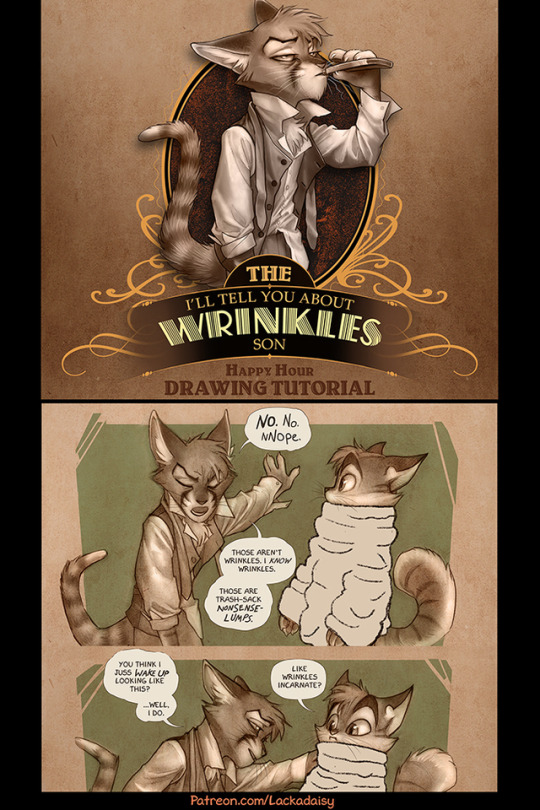
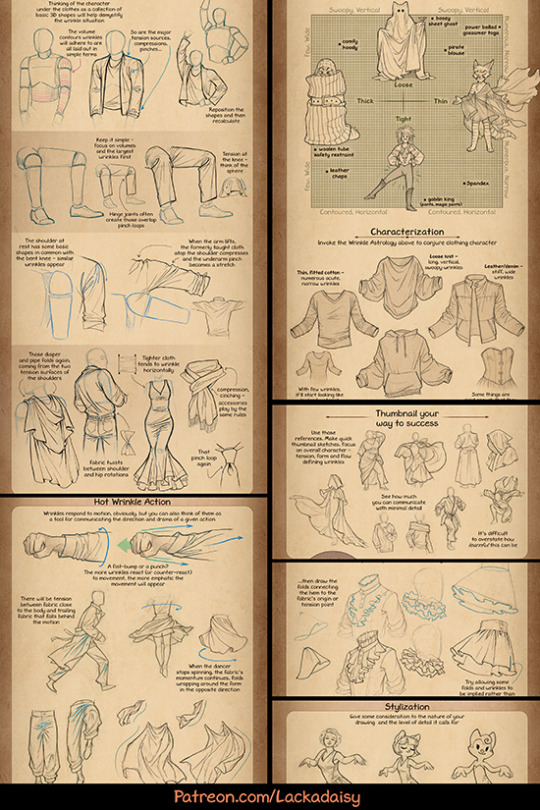
Drawing Wrinkles
I made a tutorial-thing about drawing clothing wrinkles - something I’ve had a few requests for. For all the banality of wrinkles, they’re an expansive topic. Anyway, these are some previews. The full tutorial is available to all $1+ Patreon supporters. You can find it here!
25K notes
·
View notes
Photo
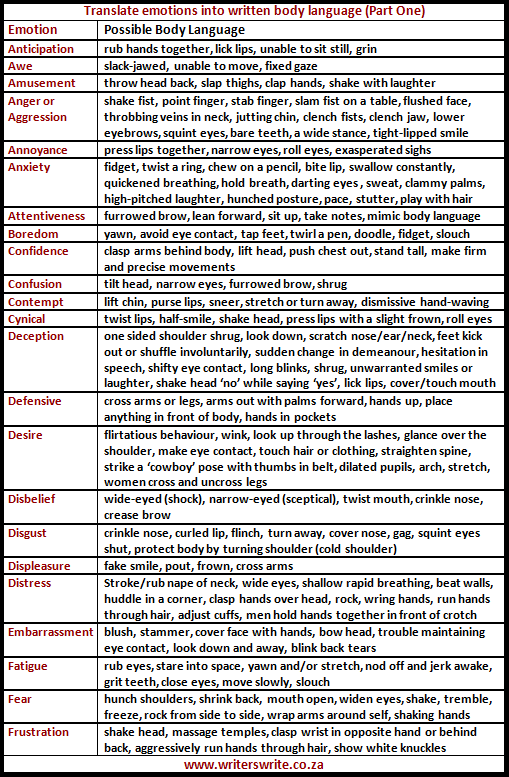
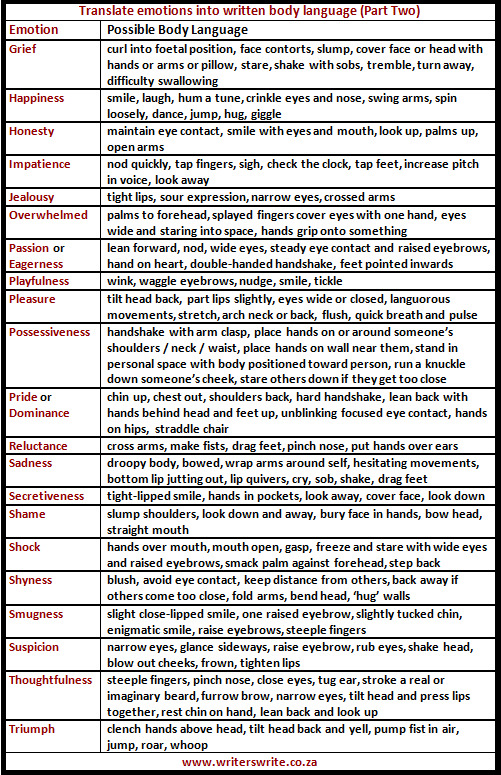
Cheat Sheets for Writing Body Language
We are always told to use body language in our writing. Sometimes, it’s easier said than written. I decided to create these cheat sheets to help you show a character’s state of mind. Obviously, a character may exhibit a number of these behaviours. For example, he may be shocked and angry, or shocked and happy. Use these combinations as needed.
by Amanda Patterson
360K notes
·
View notes
Text
Top 12 alternatives to Photoshop for digital painters and illustrators
Hello there!
Yes, we haven’t done this in a while… but our inbox and chat are swamped with questions on the subject, so this article was very much needed.
it’s a simple list of art apps, but we know you love those :D
Enough with the intro, here it is, a list of twelve art apps you may want to check out.

ArtRage is an art program for beginners and professionals. With its minimal interface, it’s easy to keep the essential tools at hand without stealing space from the canvas. Panels can be moved around and tools can be customised. We all know how important it is for digital artists to be able to modify brushes!
Pros: easy to use; friendly interface; essential tools from professional apps available; available for iOS, Android, Windows and Mac
Cons: it may get sluggish with big files and when using big brushes, but performances also depend on the running machine; limited selection of editing tools if compared to Photoshop - ArtRage is more of a painting program rather than an editing one.
Paid
ArtRage Lite is a different version at a cheaper price, mostly for beginners, but also for professionals if they need the essential.

Now free, Sketchbook is the famous app created by Autodesk for various platforms.
Pros: clean, friendly interface; easy to use; professional features
Cons: lack of official tutorials; doesn’t offer as many tools as other apps (it’s down to the essential); paid subscription in Adobe style for multiple licenses
Free and paid

Black Ink is a powerful little program few actually know, but there’s a reason: this isn’t your classing drawing app. What’s cool about it is the vast selection of special brushes, completely non-realistic, and definitely able to boost your creativity.
Pros: vast selection of customisable brushes; excellent performance
Cons: not very easy to use; non-intuitive interface
Paid

This is probably the most complete software for painting, drawing and animation. It was originally known as Manga Studio, but with its updates and addition of features, it became Clip Studio Paint.
This doesn’t say much about the quality of the features themselves considering the affordable price (if you haven’t used the app yet, that is), but among graphic apps, this one is the top seller.
Pros: professional features for illustrators; layout tools for comic/manga artists; 3D reference models; customisable tools; various sales with special prices
Cons: the interface may not appear intuitive at first; the program may lag (again, performance also depends on the running machine)
Paid

GIMP is the famous open source image editor originally created for GNU/Linux and available for OS X and Windows.
Best known as Photoshop’s main competition, this is a manipulation program for both beginners and professionals who love design.
It offers many professional features, making the program a powerful tool.
Pros: professional editing tools; supports different formats; supported by different platforms; active community
Cons: in spite of the simple design, many options are hidden and it takes time to discover all the features; slow startup
Free

Krita is an open source painting app created by artists for artists.
Pros: easy to use; intuitive interface; great brush workflow; brush stabilizer; customisable brushes; general good performance; very enthusiastic, although small, community
Cons: it may be slow or even crash depending on the running computer and the app’s version; very few editing tools compared to Photoshop
Free

MediBang Paint is a free and light app for drawing and painting, perfect for manga and comic creation.
Pros: vast selection of brushes; cloud sharing; friendly, minimal interface (non-desktop app); also available for iPad, iPhone and Android
Cons: requires an account to use all features; non-intuitive interface (desktop version)
Free

Mischief is a sketching app with essential tools, useful for brainstorming and ideation.
Pros: infinite drawing canvas; friendly interface; easy to use; cheap pro version
Cons: few updates; offers only the essential (but that’s the point); no editing/adjustment tools
Free and paid

Corel’s jewel, Painter is the most famous software that offers digital tools able to give a traditional feel to brushes and canvas.
Pros: different selection of media; many professional features; PS-friendly
Cons: certain brushes may work slow; not easy to use at first; the software may crash (this is the most common report); pricey
Paid

Paintstorm Studio is a professional software for digital painting. It’s focused on the use of brushes and blending, which makes the software a little gem in the digital painting field.
Pros: good brush workflow; brush stabilizer; “close gap” feature; customisable interface and tools; professional features; affordable price
Cons: non-intuitive interface (desktop version)
Paid

Procreate is the powerful drawing app for iOS.
With the very sensitive Apple Pencil, Procreate is so easy to use that many artists chose the iPad over the most famous graphic tablets.
Pros: friendly interface; makes it easy to organise files; excellent brush workflow; customisable brushes; video recording; affordable price
Cons: hidden features; only available for iPad
Paid

SAI is a simple app for artists who want to focus on painting and drawing.
It’s well known for its good pressure support and its essential tools for manga artists, but SAI can be used by any kind of artist who wants to paint.
Pros: easy to use; friendly interface; light software; customisable brushes; tons of (non-official) tutorials
Cons: limited selection of tools, even basic ones; limited canvas sizes and uses; it might crash from intensive work, especially with big canvases and brushes; supports only RGB colour mode; lack of support
Paid
We hope you’ll find this list useful.
If you think there are other apps that should have made this list, don’t hesitate to let us know!
Thank you and peace out,
G&M
Buy us a coffee ❤
Other articles:
10 inspiring and helpful YouTube channels for digital artists
6 inspiring Art Podcasts for digital artists
7 amazing Photoshop extensions and tools for digital artists
87K notes
·
View notes
Text
for all you writers out there:
donjon has tons of generators. for calendars. for demographics of a country and city. for names (both fantastical and historical) of people, nations, magics, etc.
this site lets you generate/design a city, allowing you to choose size, if you want a river or coast, walls around it, a temple, a main keep, etc.
this twitter, uncharted atlas, tweets generated maps of fantasy regions every hour.
and vulgar allows you to create a language, based on linguistic and grammatical structures!!! go international phonetic alphabet!!!
62K notes
·
View notes
Photo

So maybe you’re a writer or maybe you’re in a fantasy RP group, maybe you just want to make maps. Either way, with the right guidance the process is pretty easy. Here’s some Photoshop and research resources I’ve compiled to make your life easier.
WORLD MAPS How to generate a map in Photoshop (video) How to create (mountain) brushes (video) How to create trees (video) How to create mountains and hills (video) How to create swamps and deserts (video) Tolkien-Style Map Brushes (1)(2) Parchment Textures (1)(2)(3) Calthyechild’s Fantasy Map Tutorial & Resources World Maps to inspire you (1)(2)(3)(4)
CITIES City Map Generator Clevergirlhelps’ Brilliant Post on City Planning Thewritingcafe’s Brilliant Post on City Planning Streets VS Monuments How to create a grid in Photoshop City Brushes Cities to inspire you (1)(2)(3)(4) MISC. Ship Plans How Geography Affects Climate How Streets Evolve as Cities Grow History of Building Materials Climates R. Steves’ Europe (Videos) NEED A NAME? Location and Setting name generator Pirate Ship name generator Ship name generator
17K notes
·
View notes
Text
what if people got a new name every birthday
what if the name represented how old you were, like every 11 year old was named Josh
“I had my first kiss when I was Greg”
645K notes
·
View notes
Text
Even More notes on writing deaf characters
Talking
People talk to themselves and that includes Deaf people
I sometimes sign to myself, but whether I mutter or sign depends on why I’m talking to myself
Cooking? Verbal speech to keep myself on task. Trying to work out an emotional scene? Signed speech.
And using my whole body to talk to myself is allows more creative freedom
Also even if a Deaf person identifies as non-verbal, they might still talk
maybe a hearing person wouldn’t recognise it as speech, but sound is a part of signed language
so muttering and breath-noises are common.
It’s also worth mentioning that “sounding deaf” isn’t what you think it is.
We don’t yell or make incoherent noises (usually)
and even if we do, that’s fine
but generally, people who are Deaf over-enunciate and speak very clearly.
This is either intuitive and perfected over time, or taught in speech therapy.
“How much can you hear”
People love to ask this question, and I can’t give them an answer.
Unless I’m feeling snippy. Then I usually ask “Well how much do you hear?”
They can’t answer either.
Ergo, if you’re hearing and writing a d/Deaf character, don’t compare the way they hear the world to the way that a fully hearing person would.
Be particularly wary of percentages
I’m 75% deaf
and I have no idea what that means
because hearing loss is very nuanced.
I’ve met someone who is 80% deaf, but she could hear in pitch ranges that I couldn’t.
Hearing aids don’t emulate sound either
so how a d/Deaf character hears with them in won’t be at the level a hearing person would
it’s also very obvious that the sound is electronically enhanced.
Putting in earplugs and walking around like that will not provide “Deaf experience”
you’re better to listen to Deaf people telling you how they experience the world.
The craft itself
Don’t fret about your word choices initially
you have the privilege of hearing and that’s okay
you take sound for granted, don’t worry about it.
(Yet)
Once you’ve got the story how you want it, set aside a whole revision just for using the right language if your POV character is Deaf
printing out your manuscript in a different font is very helpful
it’ll make it easier to pick out “red flag” words and phrases.
Whenever you find a chunk of writing focused on sound/hearing, highlight it
and then tear it apart.
Can your character actually hear that owl hooting, or would the background noise be too blurry?
Would your character hear the sound as it is, or would they have an association that overrules the sense?
I.e. do they see a raven open it’s beak and think about black bubbles of ink in their throat? I know I do.
Cross out any hyper-focus on sounds or re-write them in a different way.
The golden rule
Don’t write deaf characters
Write people who happen to be deaf
Please, include us.
Thank.
28K notes
·
View notes
Text
You bored, or feeling artsy but don’t have any inspiration...? *updated!*
Do you need to distract yourself? Or are you simply bored? Here are some great websites to make the time pass.
create pixel art
Awesome photo editor and art program, all free…!
Totally free transparent textures
make a cute chibi
draw some cool generative art
be a graffiti creator
create a picassohead (you don’t need to be a picasso to do so)
paint online
another awsome site to create pixel art on
and another one
create your own mandala
or color one
create an avatar
or you can try creating your own superhero
here you can interact with organisms in different environments to see how to music changes
here’s a website that translates the time into hexidecimal colours,
Here is a website where you can travel along a 3D line into the infinite unkown
here is a website where you can listen to rain with or without music
Need a model in a certain pose for drawing? here
Want to build your own planet
here is a website where you can create your own galaxies
make your own pattern (very useful if you need a new background)
create next hit comic
make a city which looks like something from 90′s games
draw a mandala like design
jig saw puzzles
more jig saw puzzles to solve
create a stunning HTML5 animation - no coding!
make a movie
create and dress up dolls
play a piano
you can also play a guitar
create sounds
another sound creator
create a logo
design your dream home
sketch rooms
explore fashion trends and create your own sets
build a website
try this app for building a website
Or maybe start learning how to code!
design your own t-shirt or a beanie or sweatpants and order them
design your own phone case
pretend to be a graphic designer with this cool online tool
Make your own Glitch art
Here’s another glitch art maker
And another!
Holy hell, here’s a third!
make an image look like it was created by a commodore 64
freaking cool text generator!
Easy to use word processor
Make up really cool patterns or run your photos through it :)
Write an essay on anything with no hassle
Wanna see how something you write would look like if it was on JacksFilms YGS((Your Grammar Sucks videos on YouTube))?
Make pictures out of text
ASCII word generator
Need an idea for some fanart-here :D
mario
cubefield
sleep calculator essay typer
rice questions
maths
artsy-fartsy pretty thing
quotes
survive nature
rain
tumblr music
calming rain
themes
backgrounds [x]
loads of references
Still haven’t found something that would float your boat? Try these:
watch a documentary
learn to code
do something yourself
workout with the help of this great youtube channels
learn things
play pokemon or zelda or other awesome old school games
waste your time on miniclip
play games at additing games
or try games at agame
calm your thoughts
the quiet place
it will be okay
vent or listen to someone
pour out your soul
explore the sky
look at art from around the world
virtually visit museum of iraq
explore world with arounder
create a music playlist
list through rare books
scroll useful science website
create sand art
brain games
try out tastekid and discover new favorite band or movie or book
interactive 3D anatomy
random street view
post a secret
create a family tree
find our what’s the difference between x and y
help scientists and become volunteer researcher
create your own font
read a classic short story
In the mood to read, but not sure exactly what book to go for?
scribble on maps
listen to letters
play with acrobots
listen to podcasts
make a bucket list
Ever want to see the most truly useless websites in creation?
Prank a friend with this blue screen of death!
Zone out watching the colors drip down
Sprite generator!
Face Generator/Creator!
Maybe none of these peeked your interest-maybe you’ve been wanting to create an o.c, but never really knew how to start-or you just enjoy making O.C’s….Or maybe you have a Gemsona that you want to create, but don’t have the energy to draw!
This masterlist is to help you in making your own OCs….it can also apply to developing RP characters i suppose! (´ヮ`)!
Gemsona stuffs;
Just a straight up character gemsona creator
Here’s another
Not sure what gem to go with, or where?
OR maybe your unsure about more than just that?
How to Write Better OCs:
basic tips on how to make your oc even better
tragic backstory? learn how to write one/make yours great
writing specific characters
a wordier, great guide on how to develop your character
kick out those vague descriptions and make them AWESOME
Character Development:
how to actually make an OC
Q&A (to develop characters)
more Q&As
giving your character a backstory
how to write an attractive character
Need an Appearance idea?
Humanoid generator? check
Here’s another one
and maybe if you didn’t like those this’ll work
Need Monsterpeople?
Well, then here ya’ go
Maybe you need Cats?
Diversity
adding more racial diversity
avoiding tokenism, AKA, how to add diversity to your cast not just because you “need” it
writing sexuality and gender expression (doesnt include non binary, if you have a good ref to that, please add on!)
masterpost on writing more diversity into your story
cultures of the world
guides to drawing different ethnicities (not just a great art reference, but also really helpful in appearance descriptions!)
Mary Sue/Gary Stu
Test to see if your character is a Sue
Explains subdivisions of Sues/Stus
Powerful Characters Don’t Have to Be Sues
Villains
villain generator
need an evil sounding name for your evil character? bam
villain archetypes
what’s your villain’s motive for being a villain?
Relationships
character perceptions (What your character thinks of themselves and what others think of them)
how to write strong relationships between two characters
8 ways to write better characters and develop their relationships with others
OCxLove Interest Handbook
develop your couple with good ol’ Q&A!
how to write realistic relationships
how to write relatives for your characters (this is more OC related to a canon character, but will help in writing family members in general)
ARCHETYPES
12 common archetypes
8 archetypes for male/female characters
female archetypes (goes pretty indepth from two main categories)
a list of archetypes
NAMES
how to name your character
random name generator
most common surnames
surnames by ethnicity
APPEARANCE
tips for better design
basic appearance generator
pinterest board for character design (includes NSFW and images of skeletons/exposed muscle (?) so tread carefully!)
clothing ref masterpost
Clothing generator
Another clothing generator
More clothing generator
Aaaand even more
Steam punk clothing
Char Style preference
Dress Generator
DETAILS
give your character better powers
a list of professions
proactive vs reactive characters
positive and negative traits
interest generator
skills generator
motivation generator
123 ideas for character flaws
list of phobias
Oh shit someone died
Backgrounds and stuff? yep
Quirks
Personality. you need that shit
Need something fandom related?
City generator hell yeah
location? got ya
World-building?
make your own god damn laws
Landscape.
Need Item names?
Fantasy/sci-fi/etc. medicine names
Stuff to make things more interesting.Weapons, clothes, treasures… whatever your characters need.
Item & Artifact Generators
Other stuffs!
Genre, Plot, & Story Prompt Generators
How did your characters meet?
Fanfic plots. you bet your ass.
Other Other stuffs!
Wanna make a custom minecraft skin?
Well then these’ll work!
This one too~
WAIT!…if none of that worked, then maybe you want to make a southpark style character?
Here!
Well, this one’s nice too~
And another..
Aaaand another!
UNDERTALE STUFFS;
Undertale character speech box creator!
Want inspiration for an Undertale Oc?
OR a super Edgy Undertale Theory generator?
Maybe you just want to read some funny Sans Puns!
TMNT STUFFS;
How about a TMNT creator?
Or a TMNT meme generator..
401K notes
·
View notes
Text
Resources For Writing Deaf, Mute, or Blind Characters
Despite the fact that I am not deaf, mute, or blind myself, one of the most common questions I receive is how to portray characters with these disabilities in fiction.
As such, I’ve compiled the resources I’ve accumulated (from real life deaf, mute, or blind people) into a handy masterlist.
Deaf Characters:
Deaf characters masterpost
Deaf dialogue thread
Dialogue with signing characters (also applies to mute characters.)
A deaf author’s advice on deaf characters
Dialogue between deaf characters
Mute Characters
Life as a Mute
My Silent Summer: Life as a Mute
What It’s Like Being Mute
21 People Reveal What It’s Really Like To Be Mute
I am a 20 year old Mute, ask me anything at all!
Blind Characters:
The 33 Worst Mistakes Writers Make About Blind Characters.
@referenceforwriters masterpost of resources for writing/playing blind characters.
The youtube channel of the wonderful Tommy Edison, a man blind from birth with great insight into the depiction of blind people and their lives.
An Absolute Write thread on the depiction of blind characters, with lots of different viewpoints and some great tips.
And finally, this short, handy masterpost of resources for writing blind characters.
Characters Who Are Blind in One Eye
4 Ways Life Looks Shockingly Different With One Eye
Learning to Live With One Eye
Adapting to the Loss of an Eye
Adapting to Eye Loss and Monocular Vision
Monocular Depth Perception
Deaf-Blind Characters
What Is It Like To Be Deafblind?
Going Deaf and Blind in a City of Noise and Lights
Deaf and Blind by 30
Sarita is Blind, Deaf, and Employed (video)
Born Deaf and Blind, This Eritrean American Graduated Harvard Law School (video)
A Day of a Deaf Blind Person
Lesser Known Things About Being Deafblind
How the Deaf-Blind Communicate
Early Interactions With Children Who Are Deaf-Blind
Raising a DeafBlind Baby
If you have any more resources to add, let me know! I’ll be adding to this post as I find more resources.
I hope this helps, and happy writing! <3
119K notes
·
View notes
Text
16 Villian Archetypes
The TYRANT: the bullying despot, he wants power at any price. He ruthlessly conquers all he surveys, crushing his enemies beneath his feet. People are but pawns to him, and he holds all the power pieces. Hesitate before getting in this man’s way – he’ll think nothing of destroying you. The BASTARD: the dispossessed son, he burns with resentment. He can’t have what he wants, so he lashes out to hurt those around him. His deeds are often for effect – he wants to provoke action in others. He proudly announces his rebellious dealings. Don’t be fooled by his boyish demeanor – he’s a bundle of hate. The DEVIL: the charming fiend, he gives people what he thinks they deserve. Charisma allows him to lure his victims to their own destruction. His ability to discover the moral weaknesses in others serves him well. Close your ears to his cajolery – he’ll tempt you to disaster. The TRAITOR: the double agent, he betrays those who trust him most. No one suspects the evil that lurks in his heart. Despite supportive smiles and sympathetic ears, he plots the destruction of his friends. Never turn your back on him – he means you harm. The OUTCAST: the lonely outsider, he wants desperately to belong. Tortured and unforgiving, he has been set off from others, and usually for good cause. He craves redemption, but is willing to gain it by sacrificing others. Waste no sympathy on him - he’ll have none for you. The EVIL GENIUS: the malevolent mastermind, he loves to show off his superior intelligence. Intellectual inferiors are contemptible to him and that includes just about everyone. Elaborate puzzles and experiments are his trademark. Don’t let him pull your strings – the game is always rigged in his favor. The SADIST: the savage predator, he enjoys cruelty for its own sake. Violence and psychological brutality are games to this man; and he plays those games with daring and skill. Run, don’t walk, away from this man – he’ll tear out your heart, and laugh while doing it. The TERRORIST: the dark knight, he serves a warped code of honor. Self-righteous, he believes in his own virtue, and judges all around him by a strict set of laws. The end will always justify his nefarious means, and no conventional morality will give him pause. Don’t try to appeal to his sense of justice – his does not resemble yours. The BITCH: the abusive autocrat, she lies, cheats, and steals her way to the top. Her climb to success has left many a heel mark on the backs of others. She doesn’t care about the peons around her – only the achievement of her dreams matters. Forget expecting a helping hand from her – she doesn’t help anyone but herself. The BLACK WIDOW: the beguiling siren, she lures victims into her web. She goes after anyone who has something she wants, and she wants a lot. But she does her best to make the victim want to be deceived. An expert at seduction of every variety, she uses her charms to get her way. Don’t be fooled by her claims of love – it’s all a lie. The BACKSTABBER: the two-faced friend, she delights in duping the unsuspecting. Her sympathetic smiles enable her to learn her victims’ secrets, which she then uses to feather her nest. Her seemingly helpful advice is just the thing to hinder. Put no faith in her – she’ll betray you every time. The LUNATIC: the unbalanced madwoman, she draws others into her crazy environment. The drum to which she marches misses many a beat, but to her, it is the rest of the world that is out of step. Don’t even try to understand her logic – she is unfathomable. The PARASITE: the poisonous vine, she collaborates for her own comfort. She goes along with any atrocity, so long as her own security is assured. She sees herself as a victim who had no choice, and blames others for her crimes. Expect no mercy from her – she won’t lift a finger to save anyone but herself. The SCHEMER: the lethal plotter, she devises the ruin of others. Like a cat with a mouse, she plays with lives. Elaborate plans, intricate schemes; nothing pleases her more than to trap the unwary. Watch out for her complex designs – she means you no good. The FANATIC: the uncompromising extremist, she does wrong in the name of good. She justifies hers action by her intent, and merely shrugs her shoulders at collateral damage. Anyone not an ally is an enemy, and therefore, fair game. Give up any hope of showing her the error of her ways – she firmly believes you are wrong, wrong, wrong. The MATRIARCH: the motherly oppressor, she smothers her loved ones. She knows what’s best and will do all in her power to controls the lives of those who surround her – all for their own good. A classic enabler, she sees no fault with her darlings, unless they don’t follow her dictates. Don’t be lured into her family nest – you’ll never get out alive.
62K notes
·
View notes
